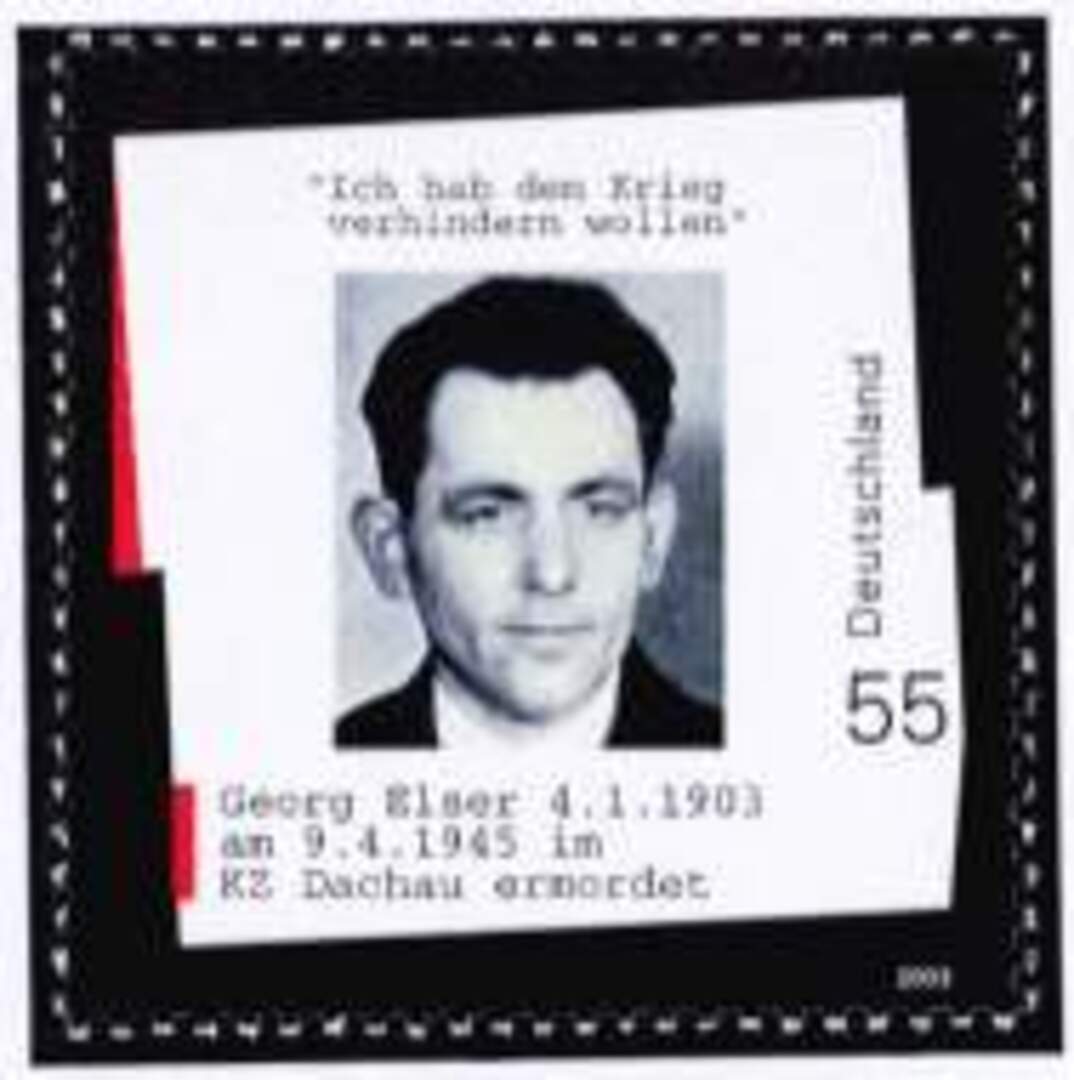There’s a saying that one man’s terrorist is another man’s freedom fighter’, a matter which is not only very topical but highly controversial. The appearance of a stamp issued by Germany on 16 January illustrates this point very effectively, for the subject is one Johann Georg Elser whose place in history was assured when he attempted to kill Adolf Hitler on 8 November 1939.
Elser was born at Hermaringen, Wurttemberg in January 1903, became a cabinet-maker and plied his trade in various parts of Germany. He never married and seems to have been a bit of a loner. In 1928 he joined the Communist Party but took no active part in the movement. After the Nazis came to power he kept his head down and got on with his job, but by 1938 he realised that Hitler was hell-bent on plunging Europe into full-scale war and so he determined to kill him.
His chance came when Hitler went to Munich early in November each year to address the rally in the Burgerbraukeller where the abortive coup had began in 1923. Elser attended this rally in November 1938 and checked out the possibility of planting a bomb close to the speaker’s podium. He returned a year later, gained entry to the building, and concealed himself under the platform for several days, hollowing out a load-bearing pillar and filling it with explosives, attached to a timing device.
Unfortunately, on the evening of 8 November 1939, Hitler cut his speech short and departed early to catch the train back to Berlin. Elser’s bomb exploded a few minutes after the Fuhrer had left the hall and thus escaped unharmed, but seven men were killed instantly and another died of his injuries, while 60 others were seriously injured in the bomb-blast.
Goebbels put out the story that the outrage had been the work of the British Secret Service. Meanwhile Elser boarded a train for Switzerland but was searched at the frontier and was arrested on suspicion on account of suspicious materials in his pockets. He was interrogated by the Gestapo and after several days of torture he confessed. He and numerous members of his family were sent to concentration camps as a result. Elser was held at Sachsenhausen near Berlin for several years and then transferred to Dachau near Munich in 1944. It seems strange that the lone bomber was not shot out of hand in 1939, but apparently Hitler planned a grand show trial for him after the war to prove conclusively his complicity with the British Secret Service. This kept Elser alive, but on 9 April 1945, only weeks before the war ended, he was executed by the SS at Dachau on the orders of Heinrich Himmler when the American forces were barely a kilometre from the camp.
Long overlooked and his memory neglected, Elser is now revered as the man who might have saved Germany from disaster. Had his assassination succeeded it is likely that the Nazi regime, so rigidly focused on its leader, would have collapsed and a coalition of liberal elements would have been able to negotiate peace before the phoney war became serious. The stamp, designed by Ernst and Lorli Junger, reproduces the only known portrait of Elser, apparently photographed at the time of his arrest.


 General
General
 General
General
 General
General